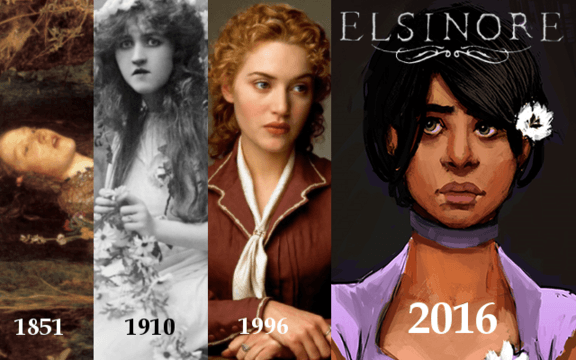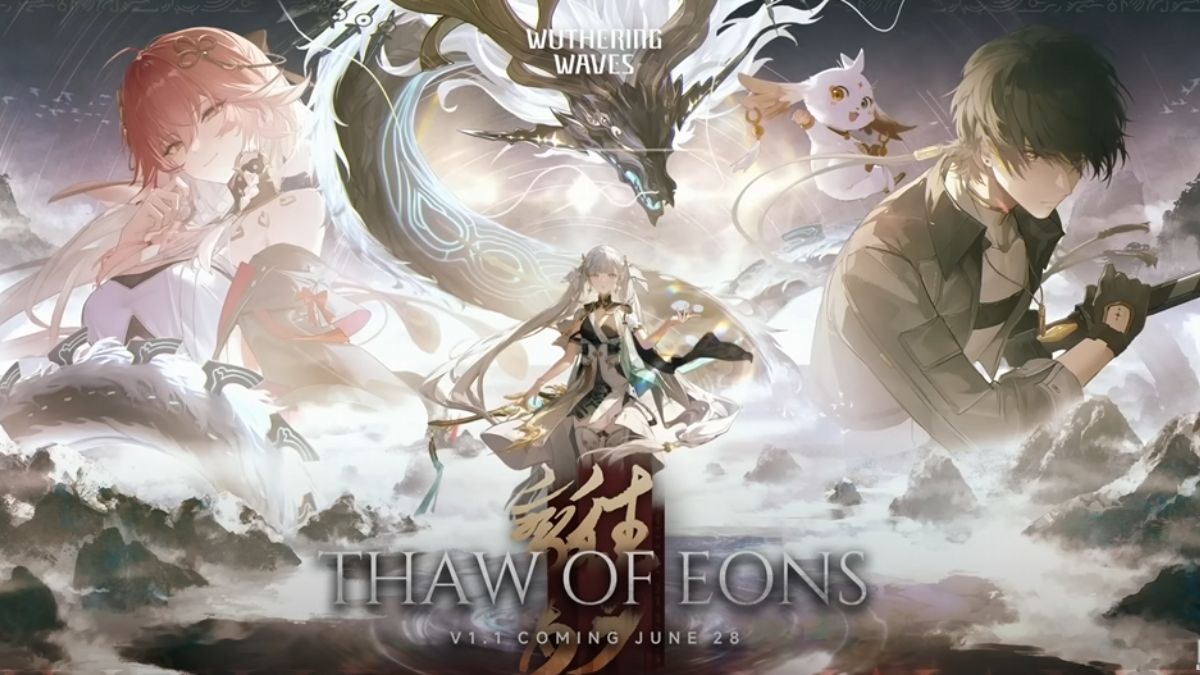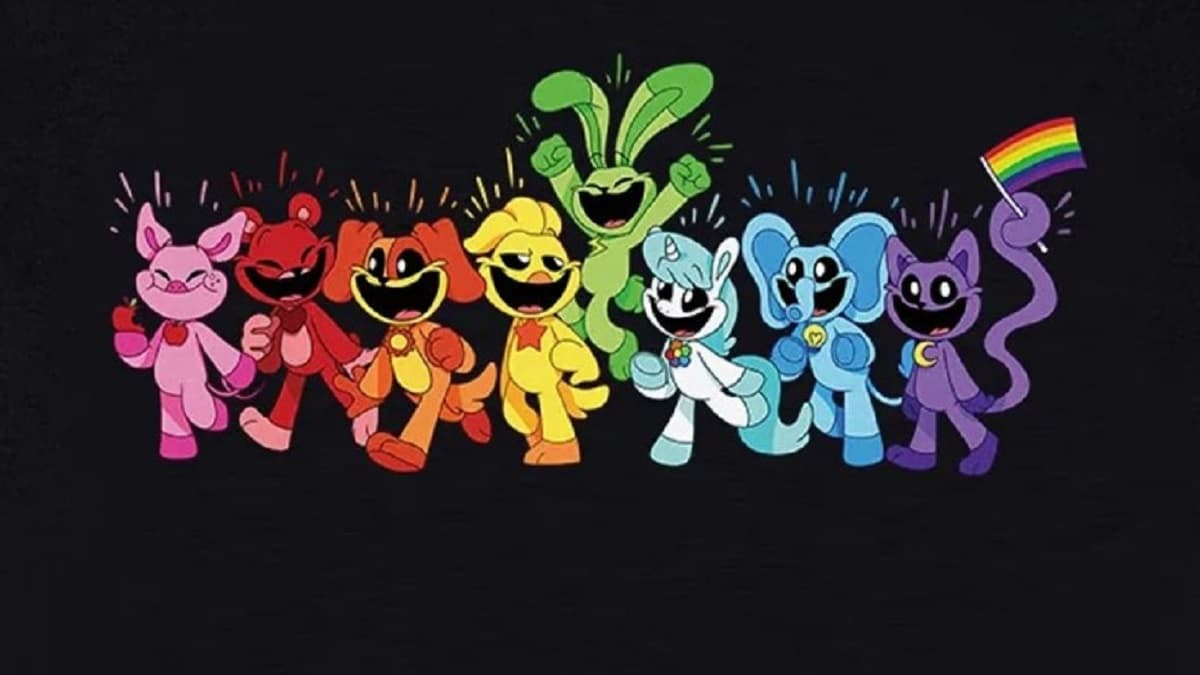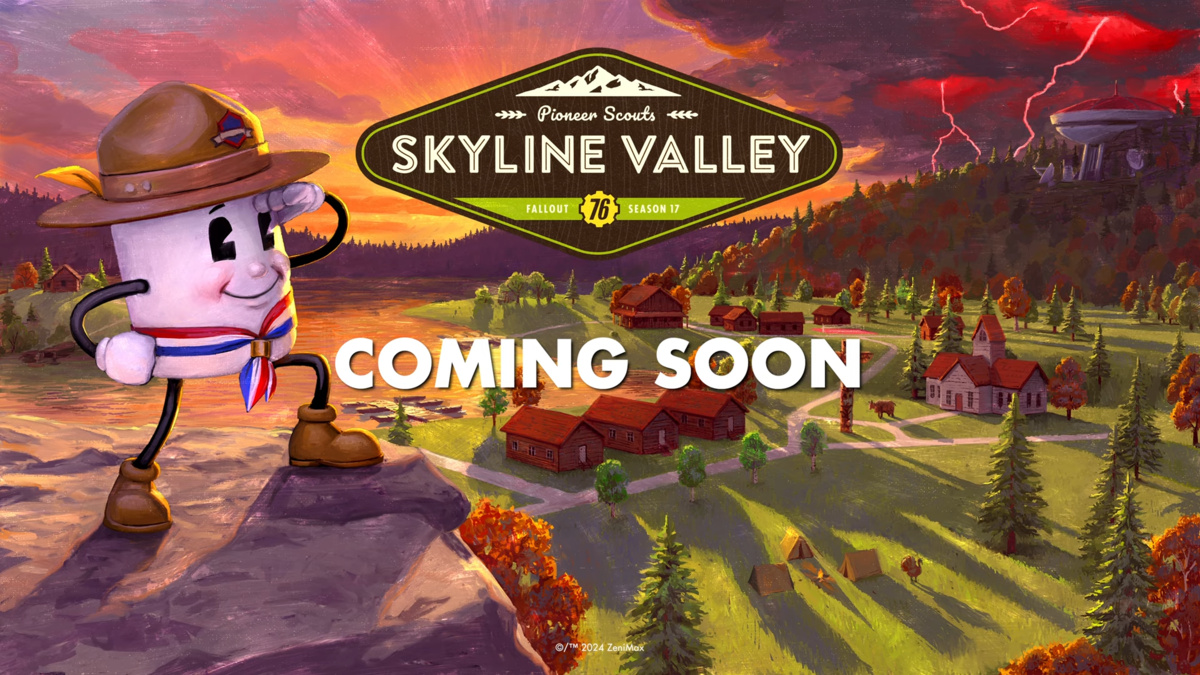Elsinore is an upcoming feminist take on Hamlet that puts you in Ophelia’s shoes, giving you four days to intervene and prevent a Shakespearean tragedy. After an incredibly successful Kickstarter run in which the game raised a grand total of $32,217, almost triple their $12K goal, development is moving full speed ahead to meet a 2016 release.
We caught up with Elsinore‘s lead designer, Connor Fallon, and found out more about the game’s conception, the importance of diversity in gaming, and where Elsinore is headed from here.
Reviving a heroine
Throughout Hamlet, Ophelia is often spoken of, but rarely the one doing the speaking. While her name and imagery appear often in popular culture, few have attempted to bring her out of the water and into the spotlight.
JI: The last update on Kickstarter tells us that Elsinore began as an idea between you and Lead Writer Katie Chironis. What was it about Ophelia that made you want to tell her story?
CF: Ophelia is a character who has almost had a larger role in academia than she was ever granted in the original play. Fascination with the character has ranged from symbolic interpretations of what she represents in regards to sexuality and femininity, to near conspiracy theories as to how she might have actually died and what might have motivated this mysterious death. It seemed long overdue that her story was told, as people are clearly interested in her life and what it could mean.
Ophelia is intelligent, but everyone in the castle seems concerned with telling her what she should be rather than listening to what she has to say.
And there is plenty to work with. In the actual text, we get the sense that Ophelia is intelligent, but everyone in the castle seems concerned with telling her what she should be rather than listening to what she has to say. In a way, the lack of impact she makes on the original story made her a prime candidate to change it. The original play could be viewed as a timeline where Ophelia gave up – so what about all the other instances? What about the ones where she tried to change something?
JI: Elsinore’s been making waves with its commitment to a diverse cast. Tell us about the team’s decision to break away from Hamlet’s predominantly cis-straight white history.
CF: As part of developing the world of Hamlet to a point where the player could talk to them at any time and influence them in many ways, we needed to flesh out these characters, providing details the original text did not. A big part of these details are the characters’ origins and histories, which affect the way they interact with the world and with other characters.
The fact is, for Hamlet Shakespeare didn’t specify the races or sexuality of a lot of the characters – for the most part the entire cast consists of blank slates. So the fact that these characters have almost always been cast as white actors, and all assumed to all be straight, is more a mark of our ongoing assumptions than anything essential to the author’s original intent. I’m not claiming the bard planned for Ophelia to be of African decent, but when it came to fleshing out the characters and doing research into the time period, we quickly discovered that more diversity in Elsinore castle was plausible. At that point in time, merchant trading had started to occur much more frequently, and those in court would have likely crossed paths with individuals from all over, a fact reflected in some of Shakespeare’s other plays.
But even if this wasn’t the case, diversity was something we as a team cared about. Everyone deserves to be able to find heroes that look like them. We live in a diverse world, and while many performances of the original play don’t reflect that, there is no reason our own take on it can’t.
Just in case you haven’t seen it, Katie wrote a fantastic piece about this very topic on Gamasutra.

Ophelia’s final design compared to the earliest sketches
JI: Elsinore’s “gameplay flow” looks like it’s going to be an innovative twist on how the story is experienced, with NPCs going about their lives and schedules in real time. What inspired you to implement this system in the game?
CF: It’s increasingly common for almost every part a game world to be scripted around the player – buildings that collapse when you look at them, muggers that wait to mug their victims until you are within earshot, and very patient explosions that wait for the player to be close enough to be startling (but not so close as to be fatal!) If the player does nothing, the show comes to a halt.
But in the real world, if you wait around and do nothing, the world moves on without you, lives going on without the influence you could have had – and this is especially the case if you are someone like Ophelia, whose world is structured in such a way to deem her “unimportant.” Having the world move on without you in such a way where you inaction is just as meaningful as action just worked much better for us thematically. Your time and attention are valuable – there is only so much you can affect in one go round.
Majora’s Mask is obviously a huge influence in this regard. All of the side content in that game occurs over specific time frames in such a way that it is impossible to see or change every outcome in one go. And if you are not there to stop the alien abduction, then the aliens don’t wait. The fact that the main character is caught in a time loop in both Majora’s Mask and Elsinore means that even missing an event is not a loss – you have infinite tries to see how it could play out differently.
The future of Elsinore
While Golden Glitch Studios has already unveiled a lot of exciting information about Elsinore, they’ve recently announced several more aspects of the final game for Ophelia to discover.
JI: Since Elsinore ended its impressive Kickstarter run on May 26, updates on the game have been sparse. What can you tell us about where Elsinore stands on production? How close are you to completion?
CF: The Kickstarter was an incredibly busy month where we were speaking with journalists, writing blurbs, and tweeting our hearts out in order to spread the word far and wide. For that reason, however, we didn’t have as much time to focus on game development during May as we’d have liked. Therefore, June has been about making up for lost time and implementing some much-needed updates for core systems, like our UI. Important things, but things that don’t make for very exciting updates.
To go into more detail, We’re currently reworking the engine we created pre-kickstarter to make it more robust and able to support the variety of scenarios and depth of interactions we wish to have in the final game. Design-wise, we are also focusing on how the opening moments of the game will work and feel – because our systems will mean nothing if the player can’t engage with them in a meaningful way.
Our intended release is late in 2016, so we’ve got a ways to go before release, but we are making steady progress. As promised, we’ll be sending out an update to our backers at the end of June!
Elsinore‘s Kickstarter Header
JI: Your second stretch goal introduced a Pirate Ship segment, featuring an all-new character. We’re pretty stoked about our options. I don’t suppose you could tell us which character was selected as the fearless captain?
CF: I can’t tell you who has been selected, because they haven’t been selected yet! The Pirate Captain will be chosen by our backers, and we will be sending out a poll for them to choose from the four options in the very near future. We have some new art for each of our four candidates to help with the voting process (or make you more conflicted about which one to cast your lot in with), so look forward to that!
JI: Several classic Shakespearean characters were among our choices for pirate captain. How did you decide which figures to enter the race for piracy and can we expect any of other Shakespearean favorites to pop up in Elsinore?
CF: Well, we started in the obvious place: actual pirates, and piracy-inclined characters, in Shakespeare’s works. From there, we expanded to characters that could have been great pirates if their lives had gone differently – Kate Minola is the prime example, as someone who clashes with the high society she is raised in but in the original play had no real escape. And to diversify things, we researched various famous pirates from the general time period, such as Grace O’ Malley.
Once we developed our pool, choosing the candidates honestly boiled down to which of our options our team was most excited about, which had narrative possibility and who would add new flavor to the cast of Elsinore. Having diversity within our options was important as well, we didn’t want the backer’s first influence to be a meaningless choice. And whichever captain the backers pick, we’ve got plenty of ideas for how they can will fit into the world!
As for other Shakespearean characters in Elsinore, “Peter Quince” is a name that is probably familiar to fans of the bard. Beyond that? It’s a secret to everybody.
JI: Near the end of your Kickstarter run, you broke $30K, therefore unlocking a new area called Castle Town and another featured character. Can you tell us anything about the candidates in line for this role?
CF: Castle Town is interesting because it’s a place Ophelia’s not supposed to go – she’ll be hanging out around common folk and leaving Elsinore for the first time. There will definitely be some very interesting things to find there which will put the way players see characters in a new light.
As for candidates for the new character, I’m afraid I can’t say anything yet. We need to nail down the pirate captain first, but this will also be someone the backers will get to vote on from a number of candidates.
JI: Finally, tell us about your intentions for the game. After everything is said and done and Ophelia’s four looping days are finally over, what do you hope players get out of Elsinore?
CF: We want them to get a meaningful experience out of it! I don’t really want to reveal our intentions this early in the process – all I will say is that we have them, and that there are some cool things we are hoping to tackle with our end project. Somewhere to start: not many games are tragedies. Why do you think that is? Because if you are not thinking about it now, hopefully you will think about it when you are done.
A huge thank you goes out to Connor Fallon and everyone back at Golden Glitch Studios for their time. You can learn more about Elsinore on the game’s official site and can find Connor on Twitter.











Published: Jun 24, 2015 2:15 PM UTC